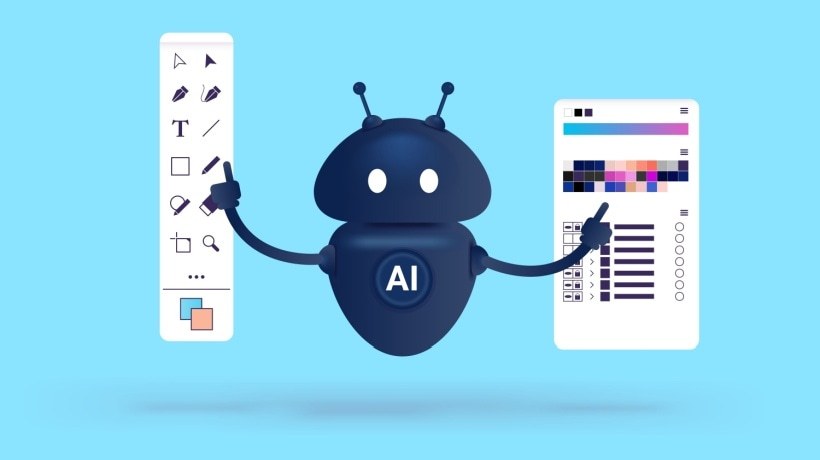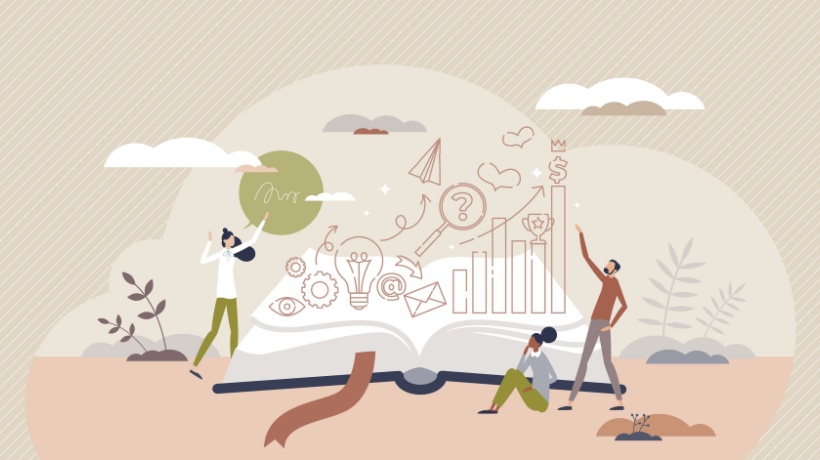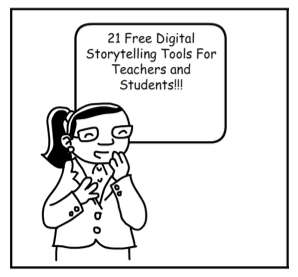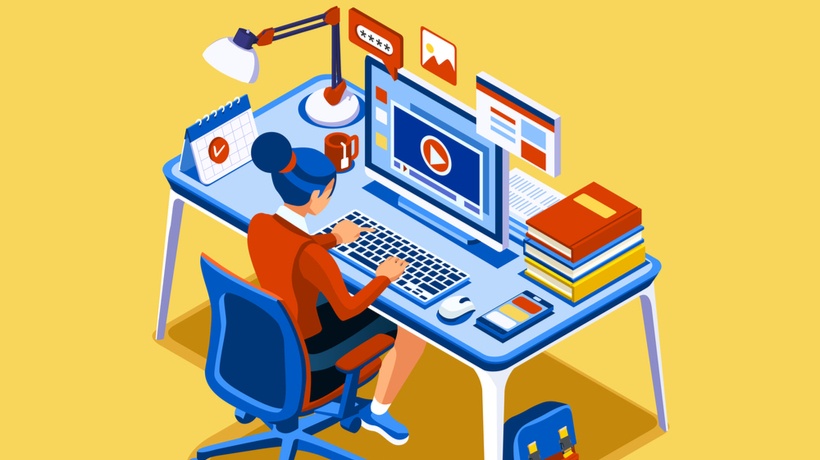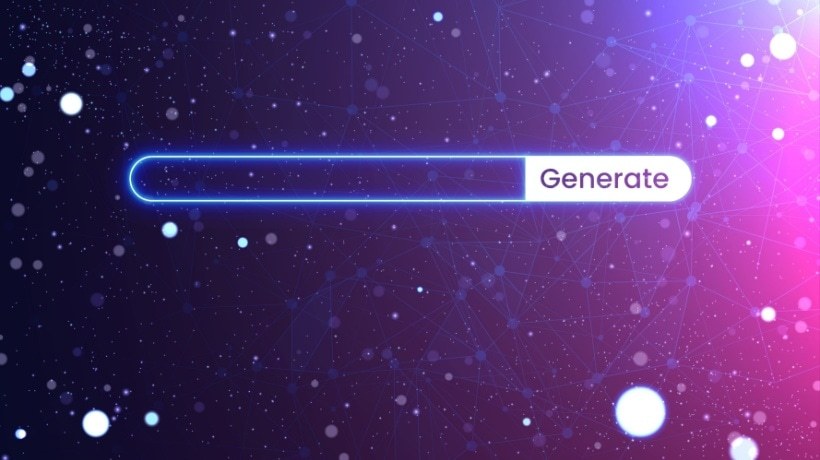Empowering Students' Creativity Through AI Tools
Modern education is undergoing a change because of information technologies, especially Artificial Intelligence (AI). These days, educational robots and AI algorithms are essential components of training and Learning Management Systems, supporting a variety of teaching and learning tasks.
Innovative methods for creating, distributing, and consuming digital media are made possible by the quick development of digital technology. AI capabilities such as deep learning have created previously unheard-of opportunities for creative sectors as technology has developed to revolutionize the economy.
The Use Of AI In Education
The use of AI in education (AIED) has taken many forms. We now have an AI tutor that uses GPT-4 capabilities. It provides intelligent feedback and individualized learning support in a variety of subjects, such as language acquisition, programming, and mathematics.
Research shows that the global AIED market is expected to expand at a compound annual growth rate of 36% between 2022 and 2030, from its 2021 valuation of $1.82 billion. Artificial Intelligence in education is rapidly being adopted by students, instructors, and educational institutions. According to recent data, half of teachers utilize AI to create their classes, while 43% of US college students use ChatGPT and other AI applications.
Furthermore, AIED proves to be useful and efficient. AIED-enabled adaptive learning has been demonstrated to increase student test scores by 62%, while AI use generally improves student performance by 30% and lowers anxiety by 20%.
People can now use generative AI technologies like ChatGPT and other AI tools to create imaginative stories, photos, films, and animations. The next generation of children must be raised with the ability to use these innovative tools for their creative outcomes and critically analyze outcomes, despite the challenge of keeping up with technological innovations.
Using digital tools and multimedia formats to bring stories to life is essential to the creation of digital storytelling, a modern take on an age-old craft. This enables authors to create captivating and immersive stories by skillfully fusing a variety of multimedia elements. Additionally, it can be presented using a variety of multimedia features and digital platforms, including spoken or written words, photographs, videos, audio, and interactive aspects, helping students to strengthen their digital literacy, creativity, and writing abilities. In this article, we'll discuss the role of AI in developing visual storytelling skills among students.
Why Visual Storytelling Matters In Education
Using visual components, including pictures and videos, to communicate a story is known as visual storytelling. It has a very definite goal, rather than being restricted to storytelling as an end in itself. It can help to guide the user through a purchasing process, be a prelude to the fulfillment of a call to action, or be an attempt to generate interest and enthusiasm for a specific theme, brand, or product.
Visual communication is efficient, quick, and easy to understand. Compared to text, visual information is processed by the human brain 60,000 times faster. Our brains interpret images in just 13 milliseconds, and 90% of the information that is sent to them is visual (we have a narrative memory). The duration of memory is impacted by visual communication: after 3 days, we may recall 10% of the information in a text, but 65% of the information is retained when the text is accompanied by a picture.
Digital visual storytelling is one method of integrating technology into schools across subject areas. Although integrating technology into the classroom is essential, it must be done in a way that improves student learning rather than for amusement. Today's students feel at ease using technology. By utilizing this technology for digital storytelling, kids can improve their academic and literacy abilities.
AI Tools Are Redefining Creative Expression In The Classroom
AI-powered applications help generate ideas, improve problem-solving skills, and facilitate hands-on learning experiences. By acting as a co-creator, AI is revolutionizing education by giving educators and students tools that enhance creative thinking. These tools analyze student behavior and learning patterns to provide personalized recommendations, ensuring that each learner explores their creative potential at their own pace.
High-quality images require a great deal of skill in design, photography, and filmmaking. However, the entrance hurdle is being lowered by AI-powered tools, which allow the production of visually stunning material with little technical expertise.
For instance, with just basic text instructions, AI picture generators can now create beautiful, realistic images. These programs can comprehend the context and subtleties of the text to generate graphics that support the intended narrative by utilizing deep learning models and big datasets. For artists, designers, and storytellers who wish to produce distinctive, personalized pictures without the need for costly materials or in-depth technical expertise, this capability to make images from words opens up countless possibilities
In the video industry, AI-powered solutions are also allowing producers to make videos with little input. The video production process is becoming simpler thanks to tools like automatic video editors, which employ AI to choose the finest shots and make editing decisions. AI can also assist in producing visual effects, animations, and graphics that improve the storytelling experience.
From Imagination To Image: AI's Role In Visual Storytelling
Artificial Intelligence is becoming a powerful co-creator in classrooms, helping students transform their ideas into vivid, visual stories. With AI-driven tools, learners can now generate characters, settings, and entire scenes from simple text prompts—bridging the gap between imagination and execution. What's most exciting is the accessibility: educators and students no longer need advanced design skills or expensive software to create high-quality visuals.
A 2024 survey of K‑12 and higher-education instructors found that 62-63% believe generative AI tools enhance student engagement in learning activities. And with some platforms now offering the ability to turn everyday photos into animated, hand-drawn visuals, students gain playful, creative inspiration—all while engaging more deeply with their narrative work. These images can then serve as inspiration for creative writing, digital storytelling, literature interpretation, or even world-building activities. In this way, AI doesn't just enhance storytelling, it democratizes creativity, giving every student the tools to bring their unique stories to life.
Practical Ways Educators Can Integrate AI Tools
Incorporating AI into the classroom doesn't require a tech overhaul; it starts with small, creative adjustments to existing lessons. Here are practical ways educators can use AI tools to enhance visual storytelling:
Creative Writing Projects
Ask students to generate AI visuals (e.g., characters, landscapes, or Ghibli-style scenes) and build a narrative around them. This encourages descriptive writing and imaginative thinking.
Literature And Book Reports
Students can use AI-generated images to recreate scenes from novels or reinterpret key moments visually. This deepens comprehension and engagement.
Visual Storyboarding
Before writing a story or script, students can use AI art to outline their ideas visually, promoting structured storytelling and clearer narratives.
Cross-Disciplinary Projects
Combine history or science with art by having students create AI visuals of historical events, scientific concepts, or futuristic scenarios, then explain the context behind them.
Group Presentations
Teams can use AI-generated visuals to enhance slideshows and storytelling, adding visual flair without relying on stock images or clipart.
Conclusion
AI is no longer just a futuristic concept—it's a practical, creative tool that's transforming how students learn and express themselves. By integrating AI tools into the classroom, educators can unlock new levels of engagement, storytelling, and visual thinking. As we continue to explore the intersection of technology and education, one thing is clear: the future of learning will be powered by both imagination and innovation.
